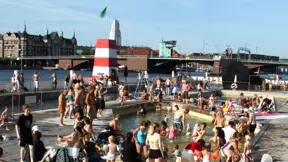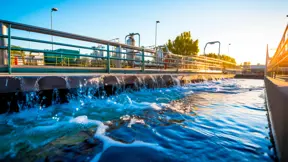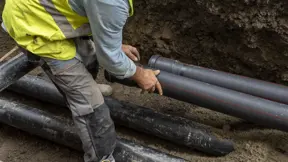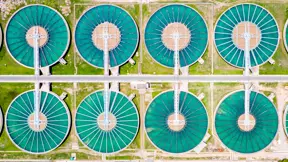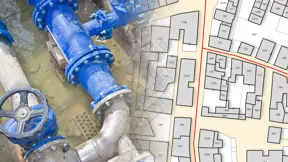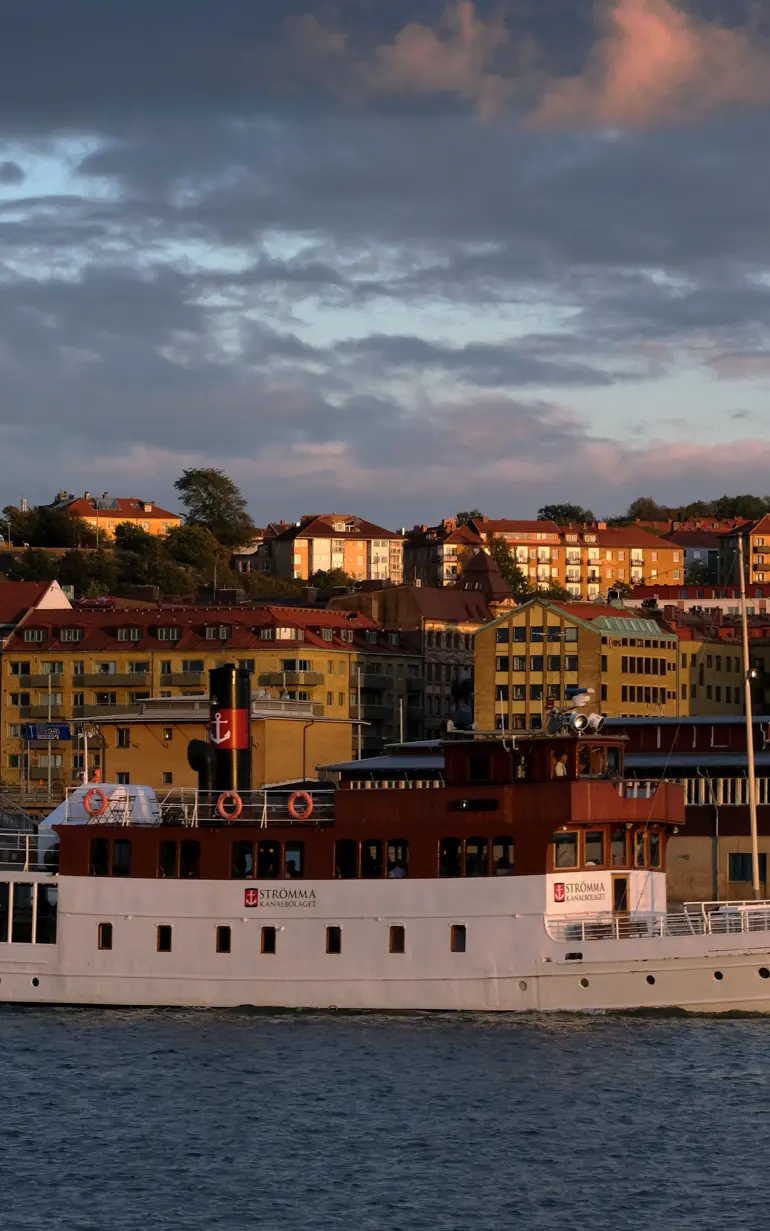
The Gothenburg region is ready for the storm
A digital twin of the wastewater utility in Gothenburg and surrounding municipalities is helping to future-proof the region and make the most efficient use of existing infrastructure
Gothenburg has a vision of becoming the best city in the world when it rains. And this vision makes perfect sense as Gothenburg is one of the rainiest cities in Sweden. Add to that a growing population, an ageing infrastructure and increasingly extreme weather patterns due to climate change, and the city’s water utilities have their work cut out for them to protect both the city and the surrounding environment.
Challenge
Heavy rainfall causes large loading variations to the Gothenburg region’s central treatment facility, the Rya water resource recovery facility (WRRF). Approximately 25% of the sewers in the City of Gothenburg are combined, which increases the risk of floods as stormwater and wastewater are transported in the same system. It also increases the risk of untreated wastewater being discharged into the surrounding ecosystem.
Furthermore, changing climate conditions combined with a growing population add further pressure to Gothenburg’s ageing infrastructure and make operations more complicated.
The main priority for Gryaab is to protect the citizens of Gothenburg from floods and to protect the ecosystems in the waterways and basins in the region from polluted wastewater. To do so, Gryaab has to ensure optimal management of the water flowing in and out of the city. They needed to find a more future-proof way to efficiently manage issues related to combined sewer overflows (CSOs) and to reduce storm weather impact on the WRRF. The traditional approach relied heavily on operator experience and judgement.
However, the Rya WRRF is only manned in the daytime on regular working days, and standby personnel operate the facilities from home the rest of the time. This puts a natural limit to the hours of monitoring and the amount of information which could be processed. It also leaves room for manual errors. Especially when high flows are expected, it is important for the operators to have as much information as possible so that they can make the right decisions and avoid critical situations, which could have negative impacts on the city and the environment.
The main challenges for Gryaab were:
- Minimising the impact of flow variations in extreme weather
- Improving the attenuation of inflow to the Rya WRRF as much as possible to reduce pressure on the system
- Improving water quality in receiving water bodies
Controlling where the CSOs occur to minimise environmental impact
Solution
Gryaab has a history of using innovative and digital solutions to support them in managing the region’s wastewater infrastructure, and they quickly saw the potential in having a digital twin of the entire system to improve overview and management.
A digital twin is basically a dynamic digital representation in real-time of a physical object or a process, such as the Gothenburg region’s tunnel system and catchment. A digital twin can be compared to the co-pilot on a plane, and it uses analytics and predictive modelling to validate decisions and to automate time-consuming and manual technical or operational processes.
By implementing the Future City Flow (FCF) digital twin, Gryaab could get real-time information about events in the tunnels as well as accurate predictions of potential issues and peak pressure on the system as the FCF digital twin also incorporates weather forecasts in the modelling.
The project included:
- Building detailed hydrological and hydrodynamic models of the tunnel system with detailed simulation of the 250 km2 catchment
Incorporation of all controllable devices (e.g. gates, pumps) in the digital twin real-time control system - Development of Forecast-on-Demand features with the option of adjusting pre-suggested strategies and analysing historical events for training purposes
- Development of an operational strategy to mitigate the risk of urban flooding
With the FCF digital twin, Gryaab can act early, and staff can make decisions based on comprehensive, real-time data and prognosis. They also use the digital twin for training in various scenarios so that the staff is better prepared for future critical situations and for making better, informed decisions. In short, the FCF digital twin is used for gaining better real-time control and for finding ways to improve the operation of the tunnel system, both today and in the future.
Client:
Location:
Sweden
Related SDG(s):
SDG 6: Ensure availability and sustainable management of water and sanitation for all
SDG 11: Make cities and human settlements inclusive, safe, resilient and sustainable
SDG 13: Take urgent action to combat climate change and its impacts
Technology:
Results
Gryaab’s implementation of the Future City Flow digital twin means that they are now able to make the best use of Gothenburg’s existing infrastructure. They will also know where to focus future infrastructure investments. And most importantly, they make sure that the people of Gothenburg will be able to continue to enjoy the clean waters in and around Gothenburg, come rain or shine.
- Reduced risk of flooding for peace of mind for both citizens and operators
- Cost-efficient long-term planning of inflow and infiltration management for informed investment decisions and more efficient use of existing infrastructure
- Improved water quality in the waters around Gothenburg and reduced environmental impact
‘Water is an integral part of life in the Gothenburg region, and we have an important task in making sure that the water remains an asset and not a liability. The pressure on our infrastructure is increasing as the region grows and we continue to receive more violent cloudbursts, but now we are warned ahead of time and know which actions to take at which time. Our long-standing collaboration with DHI means that we stay ahead of the digital curve with solutions such as the Future City Flow digital twin. We are now ready for whatever weather patterns the future will bring, and we are in a stronger position to protect the receiving waters in and around Gothenburg.’
Åsa Magnusson, Process Engineer
Gryaab AB
About our client
Gryaab AB is a wastewater utility currently serving seven municipalities in the Gothenburg region on Sweden’s west coast with more than 800,000 citizens connected and another municipality, Bollebygd, to be connected around 2025. Gryaab owns and operates the Rya water resource recovery facility (WRRF) and a 130 km tunnel system transporting wastewater from the connected municipalities to the central treatment facility. The Rya WRRF is one of Sweden’s largest water resource recovery facilities.
You may also like
How can we help?
With our global network of offices, we make sure you get the right answers to your local needs. Tell us about your water challenges and we will get back to you.
